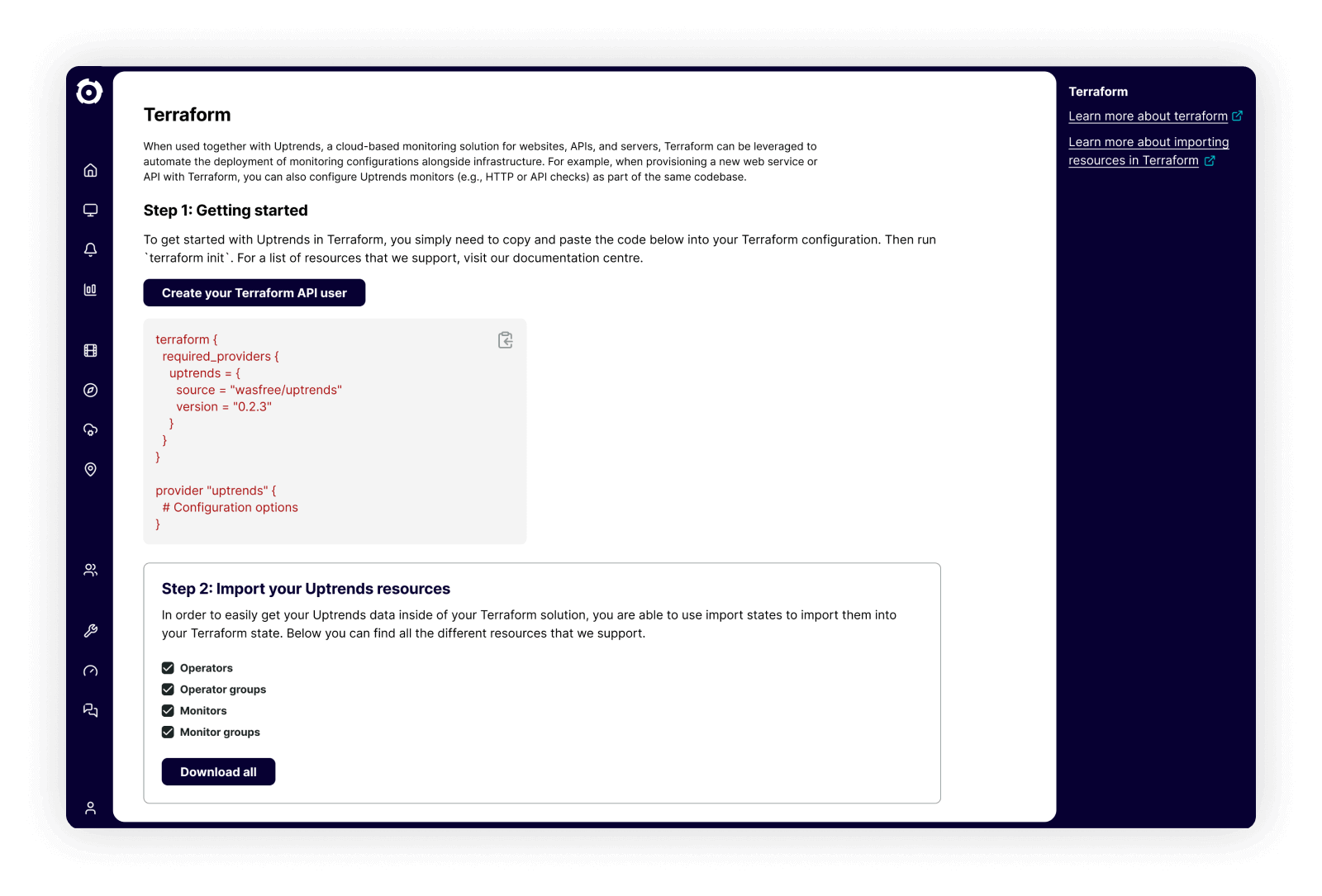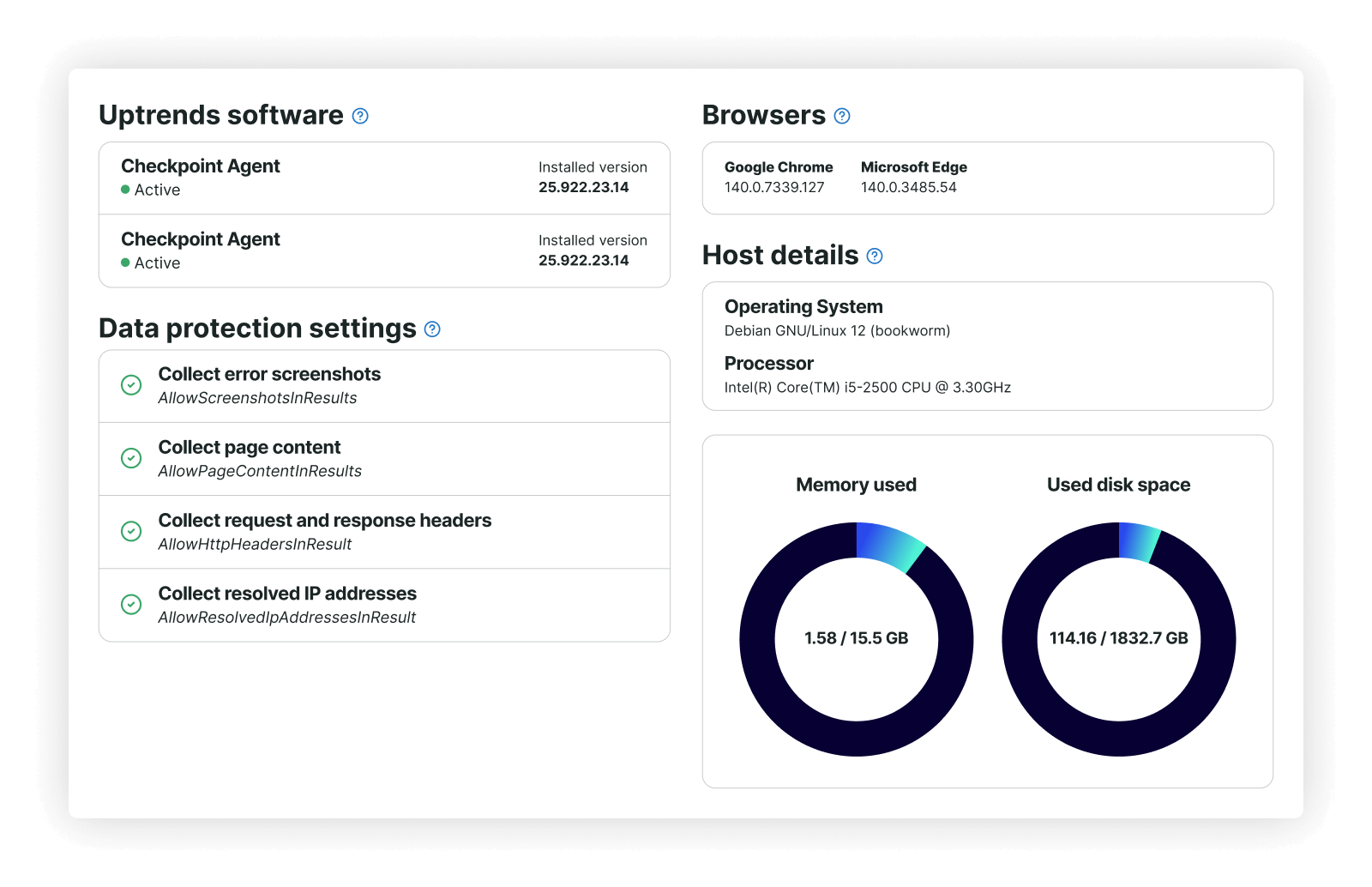Your infrastructure is cloud-first, automated, and codified. But your synthetic monitoring for publicly accessible and internal services has lagged behind. Setup is manual. Deployment is slow and inconsistent. Processes and teams are siloed.
Today, that changes. Uptrends is bringing synthetic monitoring in line with the rest of your DevOps workflow with our new:
- Uptrends Terraform Provider, which enables Observability as Code (OaC) practices
- Linux Private Checkpoints for monitoring secure, internal services
Align monitoring with how you build and deploy
Modern infrastructure is lightweight, Linux-first, API-driven, and codified. If your monitoring falls behind, you risk:
- Manual burden that slows deployments
Say you spin up new microservices in Kubernetes. Someone must configure monitors via clicks in a dashboard — adding manual effort and potentially delaying releases.
- Governance and compliance gaps
Without monitoring defined as code, changes aren’t versioned or peer reviewed. This makes it hard to enforce policies, prove compliance, and keep teams and regions consistent.
- Inconsistent coverage across environments
Staging environments are often left unmonitored because setting up coverage takes too much effort, meaning issues only surface in production when they’re harder and costlier to fix.
The solution: shift monitoring left, automate it, and make it native to your infrastructure.
Here’s how.
What are we launching?
Uptrends Terraform Provider
What you can do: Define and manage your Uptrends resources (monitors, alerts, operators, and permissions) directly in Terraform.
When to use: If spinning up a new environment or deploying a microservice, for instance, this makes monitoring part of your infrastructure code — versioned, governed, and CI/CD-ready.
Why it matters: With a single Terraform apply, monitoring is automatically baked into your infrastructure pipelines and operational workflows.
Instead of relying on manual setup (a.k.a. ClickOps), teams can standardize monitoring as code, version changes, and ensure development, staging, and production environments have consistent coverage from day one.

Linux Private Checkpoints
What you can do: Deploy synthetic monitoring inside secure environments using lightweight, Linux-native private checkpoints. Run checks behind firewalls or on private networks — wherever your critical internal services live. You can install monitoring nodes directly into development, staging, or production environments.
When to use: For example, when testing internal APIs, monitoring SaaS apps behind a VPN, or validating services in a Kubernetes cluster.
Why it matters: Removes Windows dependencies and heavy setups. This simplifies deployment, can reduce infrastructure costs by up to 50%, and aligns monitoring with Linux-first stacks. Private monitoring is now built for the environments you already use.

Explore Linux Private Checkpoints
Who is this for?
These capabilities are designed to support teams responsible for:
- Building CI/CD pipelines
- Defining infrastructure standards
- Securing internal systems
- Scaling cloud-native environments
They make sure synthetic monitoring is fully integrated and managed just like your code and infrastructure: automated, versioned, and integral to your workflow.
Whether you’re scaling microservices, spinning up ephemeral environments, or enforcing compliance, monitoring moves with your infrastructure.
Automate deployment, simplify internal monitoring
Uptrends Terraform Provider and Linux Private Checkpoints are available now.
For DevOps and Platform Engineering teams, this means you can deploy monitoring automatically with your infrastructure and gain secure visibility into internal systems.
Modern infrastructure is cloud-first, automated, and codified.
Now your monitoring is too.